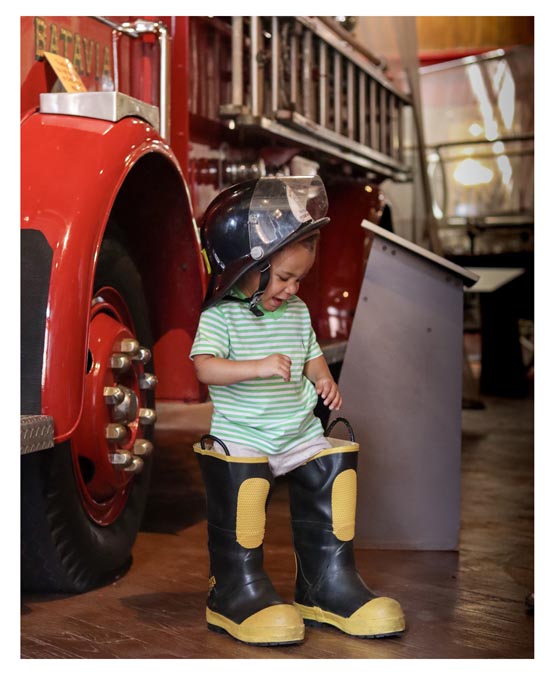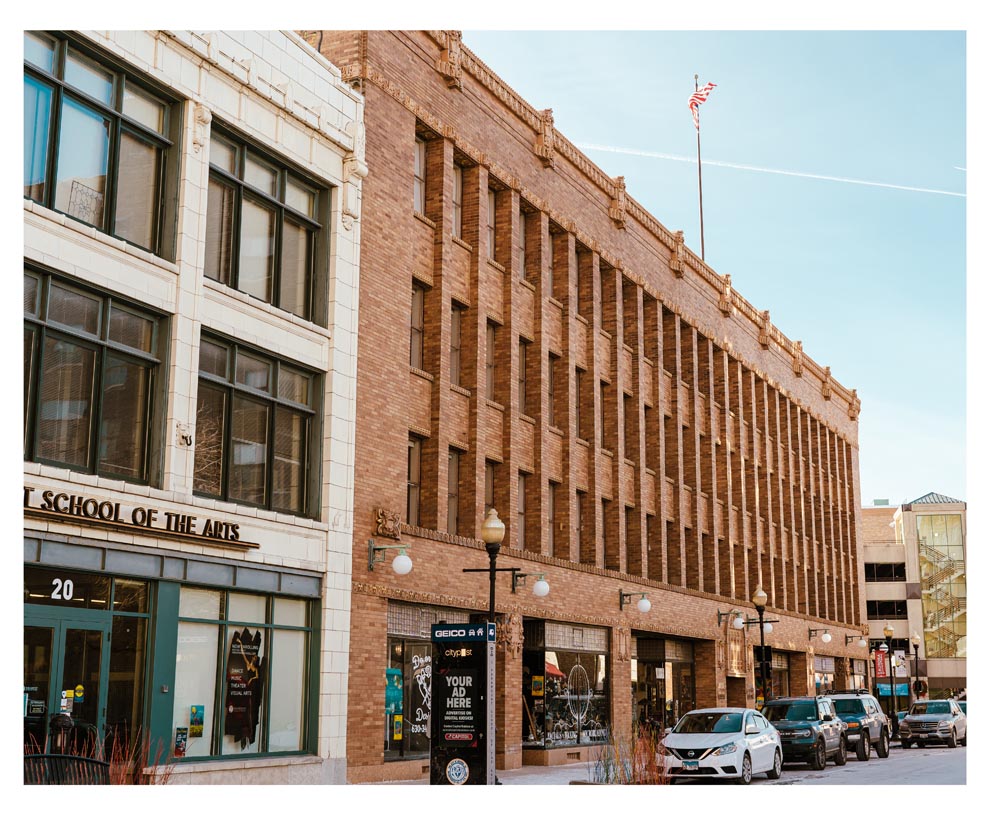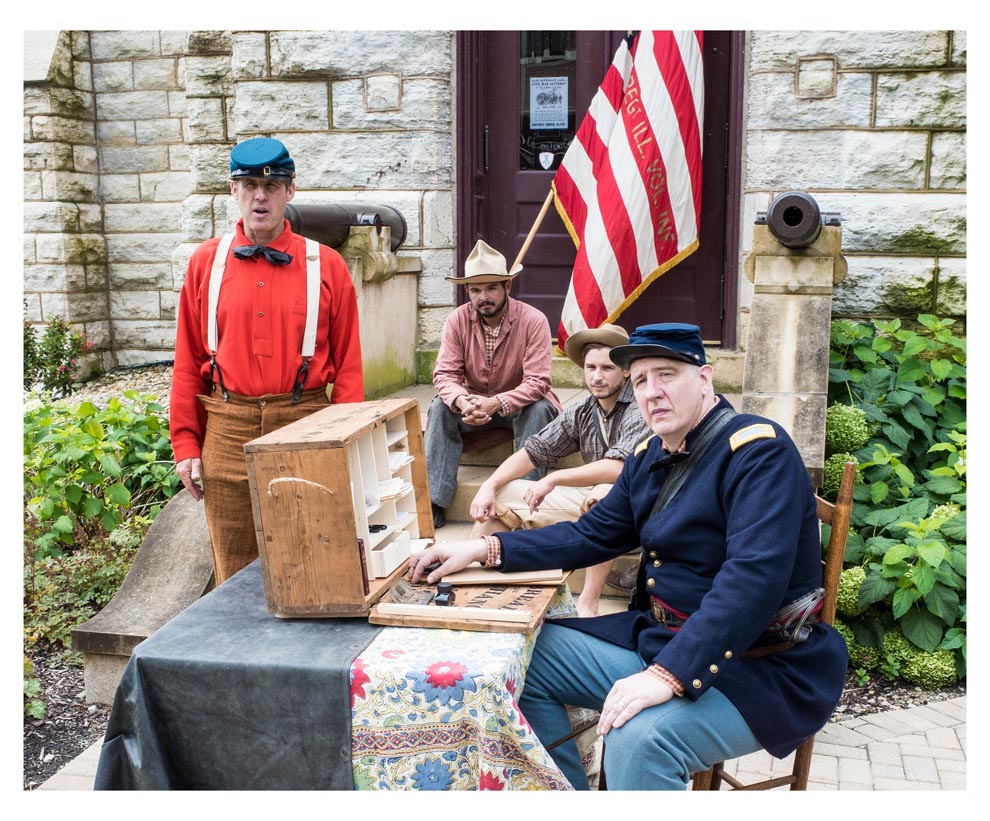

We rise through legacy, growth, and community. This year, Aurora Downtown will celebrate five milestones that exemplify that truth which honors our City’s history and its forward momentum.
10 years of First Fridays
Aurora has a long tradition of celebrating the arts. Prior to First Fridays, the Aurora ArtWalk was last held in Fall 2012, and there once again became a need for an inclusive art event in the community. When The ArtBar started at Two Brothers Roundhouse in 2012, it gave momentum to other newly-opened art galleries to band together and hold art openings on the first Friday of the month. The first collective First Fridays was held at a handful of venues in September 2013. First Fridays has grown to open approximately 30 venues with live music, art exhibits, and cultural activities. The event continues to help downtown businesses welcome new patrons, and it encourages art in the community. Visit the evening of each first Friday of the month, February through December with the exception of July.
55 years of Aurora Regional Fire Museum

Although the collection started two years earlier in 1966, the Aurora Fire Museum opened to the public in October 1968 under the leadership of Charles and Georgia Goodwin. The husband and wife team curated the Museum in the basement of Fire Station 4. As the collection grew, so did the need for a new home, and the 1980s were spent acquiring and preparing the current location, the old Central Fire Station. The Museum opened in the Broadway location in Fall 1990. The building received major restoration, including the iconic fabricated dome, the following decade, and reopened in Fall 2004. The Museum continues to grow with new exhibits and a new mural that will be unveiled at First Fridays March 3.
100 years of Boxcar Camp
Many of Aurora’s early Mexican immigrants, such as Senobia Nila who came to the U.S. in 1923, worked for the Chicago, Burlington, & Quincy Railroad (CB & Q) and were employed at the West Eola Reclamation Plant (Eola Scrap Yard). Approximately in 1923, the railroad agreed to provide housing near the plant in the form of old railroad boxcars which had been taken off their wheel carriages. The Eola Boxcar Camp (known as “El Camp” to residents) became a thriving community of families in 20 cars. It even featured its own church, which the residents built. With the Great Depression in the 1930s, the railroad work force was greatly reduced, and the boxcar camp was dismantled in 1934, however, the immigrant families continued to reside in Aurora, and they helped shape the City, Nila’s descendants among them.
100 years of Keystone Building

The historic Keystone Building on Stolp Avenue is now 100 years old. Built circa 1922/1923, the building was formerly named the Joseph George and Newhall Building. It underwent a face lift after the Aurora Silver Plate Company relocated, a move that saw part of the building demolished and a new wing incorporated into the new structure. The National Register of Historic Places of the National Park Service added the building into its list March 18, 1980. The four-story building recently had the upper floors redeveloped into 30 single bedroom apartments. The ground floor boasts thriving businesses that include salons and a frame shop and art gallery.
145 years of G.A.R. Memorial Hall

The Grand Army of the Republic (G.A.R.) Memorial Hall was built as a memorial for Civil War veterans. G.A.R. was completed on what is now Downer Place in 1878 for the sum of $7,184.54, with more than $1,700 donated by the Ladies Monument Association. It long has served as a sanctuary and as a gathering place for men who had fought side by side on the battlefields, it was a shrine to the Union dead, and it was a place of scholarship, serving as Aurora’s first free library. The Museum can be toured at no cost from noon to 4 p.m. Wednesdays, Thursdays, and Fridays, and 10 a.m. to 3 p.m. Saturdays. Visit exhibit openings during First Fridays.
Thanks to the City of Aurora, Aurora Historical Society, and the respective museum websites for historical information.
Marissa Amoni is the manager of Aurora Downtown, a group of business and property owners in Special Service Area One. First Fridays celebrates Women’s History Month March 3. Follow Aurora Downtown on Facebook and @downtownaurora on Instagram auroradowntown.org.

